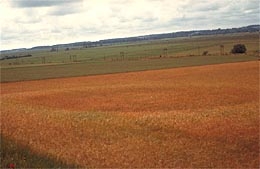- Home
- Discoveries
- The first metalworkers
- The first metal appears: copper
The so-called Seine-Oise-Marne culture (or S.O.M.), dates from between 3,500 and 2,800 BCE. In northern France, it is characterized by the appearance of monumental collective graves. This culture also marks the beginning of the use, albeit limited, of tools and weapons made of copper (points, beads, etc.), which indicates trade and exchanges taking place over longer distances. The widespread use of a handsome white flint from the region of Grand-Pressigny (Indre-et-Loire) continued, while societies were transformed with the appearance of chalcolithic cultures (the Gord group, the Beaker people and the Group of the urns with plastic decoration), in which copper, gold, and silver will be increasingly used and distributed.
The emergence of authority
Traditionally, the Bronze Age (2,200 to 800 BCE) is divided into three periods: Early, Middle and Late. Significant population migrations and social change resulted in a concentration of power, which passed into the hands of a ruling class: the chiefs, or "little princes". Since northern France does not have the raw materials for making bronze — i.e. copper and tin — the populations had to appeal to their closest neighbors if they wanted to manufacture such objects.
The ore was then transported by the British Isles, Brittany and the countries of Eastern Europe. This period is particularly well known thanks to numerous discoveries of both metal objects and graves.
View from the ground of a nearly leveled-off tumulus. The adjacent ditch is visible. Noyelles-sur-Mer (Somme).
The same site in July. The grain has grown faster over the ditch. Noyelles-sur-Mer (Somme).
Another site at Noyelles-sur-Mer (Somme). In the center of the larger circular enclosure, the white patch is what remains of a burial mound.


